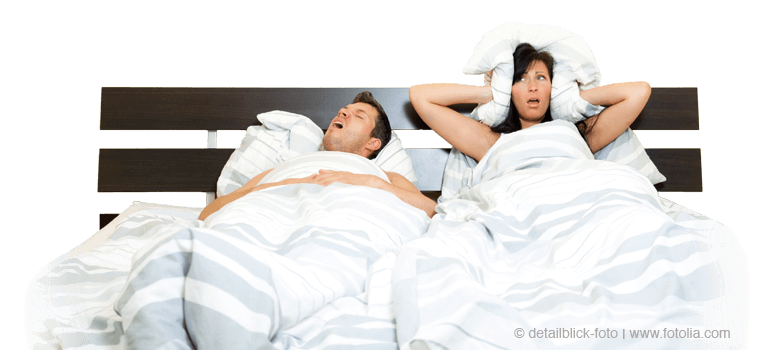Is there an alternative to CPAP?
Artificial overpressure respiration using a nasal or facial mask established itself as the gold standard in treating obstructive sleep apnoea in recent years. Here we are dealing with a breathing mask that is tightly fitted to the head and that the patient must wear all night long for the rest of his or her life. The constant overpressure keeps the soft tissues of the palate from sinking down by creating a pneumatic splint. This keeps the upper respiratory pathways open. The prognosis for success with this treatment is 97%.
However, the breathing mask is only accepted at all by 60% of patients and of these only 50% then wear the mask the whole night through.
The reasons for the poor acceptance are many. Most frequently, the patients complain of an uncomfortable feeling of tightness, pressure points around the contact surface, conjunctivitis caused by deficient sealing, drying of the mouth and nose (even with a humidifier), middle-ear inflammations and even tinnitus.
Thanks to medical progress and technical innovations, there are surgical alternatives today. The irritating necessity of night-time artificial respiration through a mask could soon be a thing of the past.
In modern ENT-therapy we have many options as alternatives to CPAP. In our practice we only use minimally invasive surgical methods that are gentle on the tissues.
In the case of a sleep apnoea surgery, we sometimes combine an effective and permanently successful treatment with various procedures and levels of treatment in the sense of so-called multi-level surgery.
Dr. Bodlaj has at his disposal a broad spectrum of the most modern methods of treatment, including, i.a.
- The Pillar procedure (soft palate implants)
- Radio frequency and plasma field surgery (Coblation)
- Implants for the base of the tongue
- Implanting a tongue pacemaker
Pillar Procedure
In the Pillar Procedure, three small plastic rods, so-called soft palate implants, are implanted in the soft palate. The goal of this minimally invasive intervention is to stabilise the soft palate. Under local anaesthetic three semi-solid rods made of Dacro-weave, with a length of around 18 mm and a diameter of around 1.5 mm are placed under the mucous tissue with an applicator. Like the planks in a sail, they prevent the “flapping” of the soft palate. The effect begins to be permanent after around 8-12 weeks once the surrounding connective tissue has completely bonded with the weave.
Radio Frequency Surgery
Radio frequency therapy is used to tighten the back of the pharyngeal area. The goal of such therapy is to prevent snoring sounds that are caused by vibrations in the palate. This is done through a natural healing process that is triggered by radiating heat into the tissues of the palate. Even in this procedure we have a minimally invasive intervention that can be performed as an out-patient procedure with local anaesthetic.
Tongue-base Implants
A simple alternative to CPAP that is both gentle on tissues and effective is tongue-base implants. This is a world-wide innovation in the treatment of OSA which Dr. Bodlaj, as one of the first leading specialists in Germany, introduced in his practice in 2013.
The system consists of implants that are inserted in the base of the tongue in a minimally invasive intervention under full anaesthesia and then keep the tongue from going limp and falling to the back. As a rule, 4 silicone implants are inserted in the base of the tongue through a small opening under the chin and individually adjusted to the correct length. The procedure is minimally invasive and takes about 20-30 minutes. Dr. Bodlaj uses a material from the American manufacturer Revent, which has been used in medical technology world-wide for more than 20 years in artificial heart valves, among other things. The individual implants are wrapped in a bio-degradable sheath and have a strap at both ends that grows together with the tongue tissue. During this healing period, which lasts 4 to 6 weeks, the external sheath disintegrates slowly and the implants slowly and evenly contract together. Thanks to this type of spring-action the base of the tongue is positioned slightly forward and the space is created for the airways and free breathing behind the tongue.


